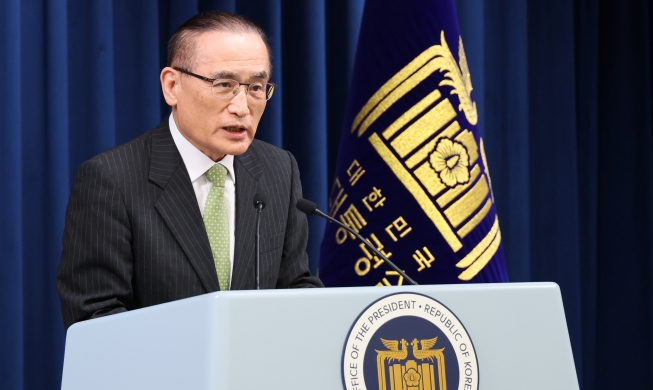- 한국어
- English
- 日本語
- 中文
- العربية
- Español
- Français
- Deutsch
- Pусский
- Tiếng Việt
- Indonesian
| Six government organizations, including the Korean Food Promotion Institute and the Ministry of Culture, Sports and Tourism, introduced their “10 Korean Recipes Loved Around the World” in September 2016, targeting non-Korean tourists who will visit Korea for the PyeongChang 2018 Olympic and Paralympic Winter Games. The aim is to help tourists enjoy Korean cuisine and widen their understanding of Korean culinary heritage. The 10 selected dishes constitute a Korean menu that contains the essential identity of Korean cuisine, while improving each dish's individual taste, convenience and appearance. |
By Yoon Sojung
Photos = Jeon Han
In cooperation with the Institute of Traditional Korean Food
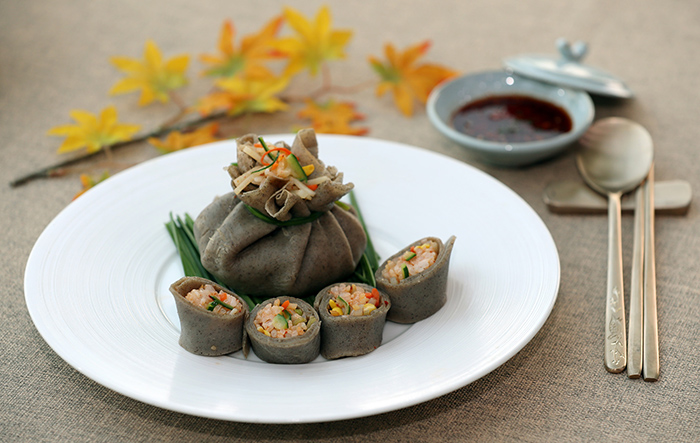
Potato and buckwheat, local produce of the Gangwon-do region, are two of the main ingredients in potato bibimbap in buckwheat wraps. This dish is great for vegetarians.
Potatoes and buckwheat are some of the best-known local specialties from Gangwon-do Province and are favorites for Korean cuisine gourmets.
Director Yoon Sook-ja of the Institute of Traditional Korean Food praises the merits of Gangwon-do potatoes and buckwheat, saying that, “Potatoes produced in the Gangwon-do region are grown in cooler areas. Therefore, they don't have much damage from insects.”
“Thanks to the cooler temperatures, these potatoes have firmer structures in the flesh and have a softer, yet tasty, texture,” said Yoon. She also said that buckwheat helps with your digestion and can prevent constipation.
Director Yoon added that potato bibimbap in buckwheat wraps offers vegetarians the chance to try the taste of Gangwon-do, saying that people can also enjoy this dish while watching Olympic sports.

The main ingredients in potato bibimbap in buckwheat wraps are potatoes, buckwheat and kimchi.
** Ingredients (4 servings)
Buckwheat wrap: buckwheat powder 2 cups (190 g), salt 2 teaspoons (6 g), water 2 cups (400 g) cooking oil 3 tablespoons (39 g)
Bibimbap: kimchi 200 g, soy bean sprouts 100 g, carrots 50 g, cucumbers 150 g, potatoes 200 g, salt 2 teaspoons (8g), rice 600 g
Sauce: soy sauce 2 tablespoons (36 g), salt 1 tablespoon (13 g), sugar 1 teaspoon (7 g), sesame 2 tablespoon (26 g), crushed sesame 1 tablespoon (6 g), red chili pepper powder 0.5 tablespoons (3.5 g), minced green chili peppers, minced red chili peppers, minced onions
blanched water parsley (20 g)
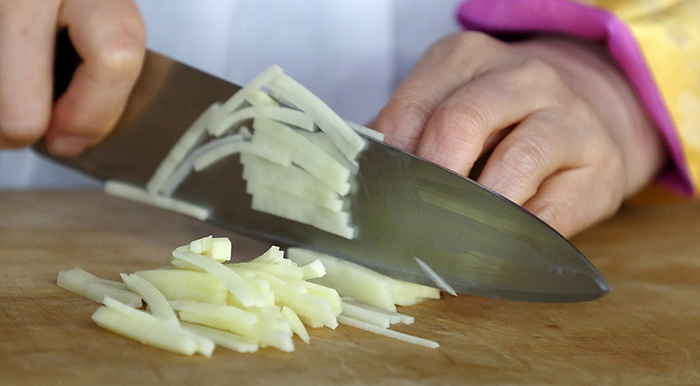
Cut the potato into thin pieces. Add salt to the potatoes, carrots and cucumber slices and stir-fry it all altogether for about 30 seconds to 1 minute. Make sure to stir-fry it only for a really short time over high heat in order to maintain the texture and the vivid color of each individual ingredient.
** Instructions
1. Mix the buckwheat powder with salt and water. Leave the batter for 10 minutes for maturing to make it chewier. Coat a heated pan with cooking oil and make thin pancakes about 17 cm in diameter over a low heat. Wheat flour can be used instead of buckwheat flour.
2. Chop the kimchi into 3 cm lengths, 0.3 cm wide. Chop off the roots of the soy bean sprouts and blanch them in hot water with salt for about 5 minutes. Cut the carrot, cucumber and potatoes into pieces about 3 cm long and 0.3 cm thick. Add 2 g of salt and stir-fry for about 30 seconds to 1 minute.
3. To make the bibimbap, add 2 tablespoons of sauce to steamed rice and mix well. Add the stir-fried kimchi, soybean sprouts, carrots, cucumbers and potatoes.
4. Place the bibimbap onto the buckwheat wraps. Roll them up. Slice them into 2 cm lengths. Wrap up the remaining bibimbap and tie it closed with the blanched water parsley so that it's shaped like a pouch. Serve with sauce.
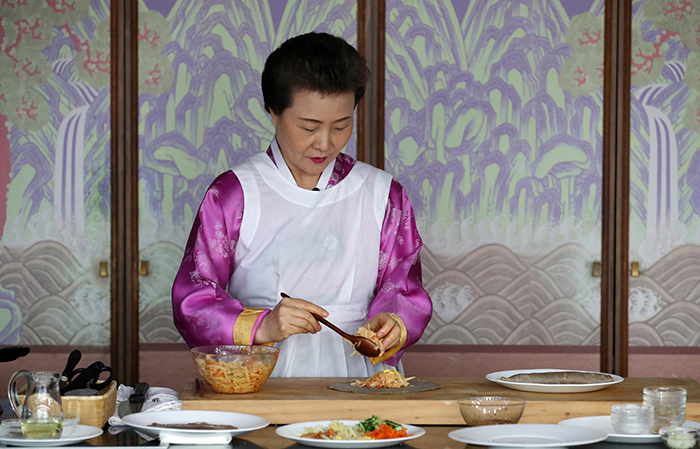
Director Yoon Sook-ja of the Institute of Traditional Korean Food places some bibimbap into a round buckwheat wrap.
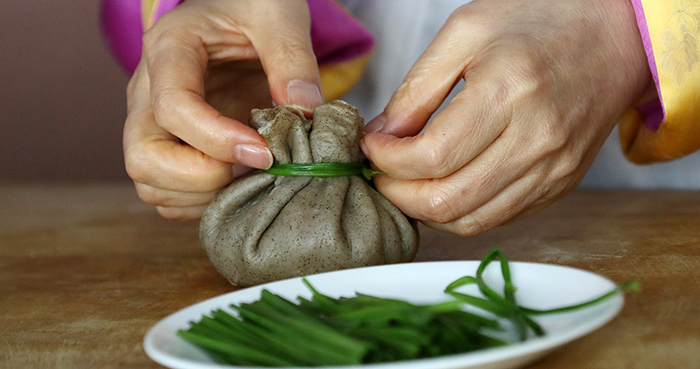
Wrap up the remaining bibimbap and tie it with a strip of blanched water parsley so that it's shaped like a pouch.
arete@korea.kr
